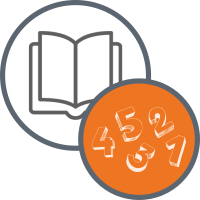CDE will be closed Wednesday, Nov. 27 through Friday, Nov. 29 for the Thanksgiving holiday.
You are here
Curriculum Support in Mathematics
Curriculum Support Menu
Tools for Curriculum Evaluation and Adoption
First-Person Curriculum Reviews
First-person curriculum reviews are reviews you do yourself. To be successful, these reviews require the involvement of a diverse set of stakeholders, people with content and curriculum design expertise, an achievable timeline, and tools for setting and applying criteria for judging a variety of materials. Two such set of tools are the Materials Alignment Toolkit and the CCSS Curriculum Materials Analysis Tools.
Materials Alignment Toolkit: This toolkit was developed by a partnership between Student Achievement Partners, Achieve, the Council of Chief State School Officers, and the Council of the Great City Schools. The toolkit includes a suite of tools:
- IMET for evaluating the alignment of a comprehensive textbook or textbook series
- GIMET-QR for evaluating the quality of instructional materials at each grade level
- EQuIP quality review rubric for evaluating the alignment of lessons, units, and modules
- EQuIP student work protocol for relating student work to the quality and alignment of materials
- AET for evaluating the alignment of grade- or course-level assessment materials
- CCSSO Principles for aligning state summative assessments
- Assessment passage and item quality criteria checklists to evaluate the alignment of assessment items and tasks
- ELL framework for establishing a rigorous and coherent program to serve emerging bilingual students
CCSS Curriculum Materials Analysis Tools: This set of tools was developed by an NCSM-coordinated committee at the request of the Council of Chief State School Officers (CCSSO). The tools are designed to assist K-12 textbook adoption committees, school administrators, and K-12 teachers in selecting mathematics curriculum materials that support the Common Core State Standards. The tools include a user's guide; tools for aligning to content; tools for aligning to the standards for mathematical practice; considerations for equity, assessment, and technology; and facilitator's materials.
Second-Person Curriculum Reviews
Second-person curriculum reviews are reviews conducted by the publisher or creator of the curriculum materials themselves. You should use these with caution (if at all), as they can rely on biased methodology and small, handpicked samples chosen to skew results in the publisher's favor. Sometimes a publisher will partner with an external researcher or organization to do this research for them. However, if the report is self-funded, self-published, and not subject to peer review, you should be wary of letting claims made in these reviews outweigh better evidence from higher quality first- and third-person reviews.
Case in point: Polikoff (2015) conducted an independent, peer-reviewed study of the alignment of seven 4th Grade textbooks and compared that alignment to each publisher's claims of alignment, using an alignment methodology that itself had been researched and shown to be the best-known way to measure alignment. Although alignment to standards varied across the seven textbooks, in every case there were meaningful misalignments that cast doubts on any publisher's claim that their materials are fully aligned to academic standards.
Third-Person Curriculum Reviews
Third-person curriculum reviews are conducted by people unaffiliated with either the school or the publisher of the materials. Ideally, these are conducted by people who are unbiased, knowledgeable about mathematics teaching and the design of instructional materials, and guided by a clear set of criteria designed to comprehensively assess the alignment and quality of curriculum materials. Three such sources of third-person reviews are EdReports.org, the What Works Clearinghouse, and Evidence for ESSA.
EdReports.org: EdReports.org is an independent non-profit that publishes reviews of K-12 curriculum materials. EdReports.org assesses mathematics materials for focus and coherence, rigor and mathematical practices, alignment to content standards, and usability. Users of EdReports.org should become familiar with their methodology, not just their ratings, and understand that a resource's alignment to standards is not the same thing as evidence of student achievement.
Louisiana Instructional Materials Reviews: Although Colorado does not review instructional materials at the state level, other states do. Most notably, Louisiana conducts comprehensive reviews of materials and classifies them as Tier 1 (exemplifies quality), Tier 2 (approaching quality), and Tier 3 (not representing quality).
What Works Clearinghouse: The WWC is a service of the Institute of Education Sciences (IES), part of the U.S. Department of Education. The WWC summarizes rigorous, peer-reviewed research about the effects that educational materials and programs have on student achievement. Users of the WWC should be familiar with their methodology, not just their ratings, and understand that the WWC only considers select research studies and those studies may not reflect the newest versions of materials or their alignment to the newest academic standards.
Evidence for ESSA: The Evidence for ESSA website is produced by the Center for Research and Reform in Education (CRRE) at Johns Hopkins University and is funded by the Annie E. Casey Foundation. The site is somewhat similar to the What Works Clearinghouse but it relies on a different set of studies meeting a different set of criteria. Users of the Evidence for ESSA website should understand that the identification of evidence as "strong," "moderate," and "promising" is determined by the type of study (experimental, quasi-experimental, or correlational), not the size of the effect the program or materials have on student achievement.
For website assistance in mathematics, please contact:




Connect With Us




